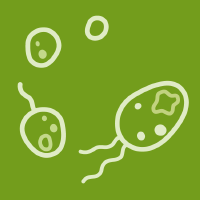Topic Menu
► Topic MenuTopic Editors





Arthropod Biodiversity: Ecological and Functional Aspects
Topic Information
Dear Colleagues,
Arthropods, i.e., invertebrate animals with a segmented body, an exoskeleton, and jointed appendages, represent the largest phylum in the animal kingdom, accounting for over 80% of all known living species. They include a variety of forms such as insects, lobsters, crabs, spiders, scorpions, mites, centipedes, and millipedes that live in every habitat on Earth and exhibit great biodiversity with a variety of adaptations. Arthropods play extremely important roles in maintaining the ecosystem and can also be beneficial for humans. For example, many insects pollinate plants, produce useful substances, act as pest control, and serve as food for other animals and also for humans. Others, such as mites, isopods, myriapods, and insects, are scavengers or decomposers, breaking down dead plants and animals and converting them into soil nutrients. Many crustacean species (crabs, lobsters, shrimp, crayfish) are largely consumed by humans and are therefore farmed on an intensive commercial scale. By contrast, some insects and crayfish are highly invasive species and represent one of the main threats to biodiversity worldwide that require strict control strategies. Others are also pests of cultivated plants and stored products or hematophagous which act as vectors or hosts of pathogenic organisms. This interdisciplinary topic provides a platform to highlight new research and significant advances concerning morphofunctional adaptations and ecology, diversity, and conservation of arthropods.
Dr. Paolo Solari
Dr. Giorgia Sollai
Prof. Dr. Roberto Massimo Crnjar
Dr. Anita Giglio
Prof. Dr. Piero G. Giulianini
Topic Editors
Keywords
- arthropods
- genetic and morphofunctional aspects
- ecological aspects
- economic evaluation
- evolutionary aspects
- biodiversity, risk assessment
- diversity threats
- ecosystem services
- ecological relationships
- urban biodiversity
Participating Journals
| Journal Name | Impact Factor | CiteScore | Launched Year | First Decision (median) | APC |
|---|---|---|---|---|---|

Animals
|
3.0 | 4.2 | 2011 | 18.1 Days | CHF 2400 |

Behavioral Sciences
|
2.6 | 3.0 | 2011 | 21.5 Days | CHF 2200 |

Diversity
|
2.4 | 3.1 | 2009 | 17.8 Days | CHF 2600 |

Insects
|
3.0 | 4.2 | 2010 | 17 Days | CHF 2600 |

Life
|
3.2 | 2.7 | 2011 | 17.5 Days | CHF 2600 |

MDPI Topics is cooperating with Preprints.org and has built a direct connection between MDPI journals and Preprints.org. Authors are encouraged to enjoy the benefits by posting a preprint at Preprints.org prior to publication:
- Immediately share your ideas ahead of publication and establish your research priority;
- Protect your idea from being stolen with this time-stamped preprint article;
- Enhance the exposure and impact of your research;
- Receive feedback from your peers in advance;
- Have it indexed in Web of Science (Preprint Citation Index), Google Scholar, Crossref, SHARE, PrePubMed, Scilit and Europe PMC.

